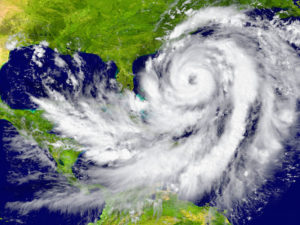 Due to the combined effects of climatic changes, shifting work and settlement patterns, and improved methods of observation and reporting, severe weather events have become a regular feature of news and popular media.
Due to the combined effects of climatic changes, shifting work and settlement patterns, and improved methods of observation and reporting, severe weather events have become a regular feature of news and popular media.
Human nature being what it is, the dramatic and emotional impact of such occurrences is heightened when the weather phenomenon in question can be specifically labeled in some way. Named storms and hurricanes have been achieving this effect for some time now.
But they’ve also been contributing to something of a headache for insurers and the insured, as these often catastrophic events produce damage capable of placing huge financial burdens on those responsible for remediating their consequences.
In this article, we’ll be looking at the principles governing “named storm” events, their impact on insurance practices in general, and their implications for self-storage Named Storm Insurance coverage, in particular.
Named Storm Insurance – What’s in a Definition?
You’ll often hear terms like storm, cyclone, hurricane, or typhoon used interchangeably. But there are distinctions between such events, as determined by scientific and geographical factors.
A tropical depression is formed when a group of thunderstorms gathers over an ocean – generally in tropical waters. The center of the storm grouping may rotate to a small extent, with winds at or below 39 miles per hour (mph).
A tropical storm has winds ranging from 39 to 73mph and is typically accompanied by heavy thunder and lightning flashes.
Hurricanes exist a step above the tropical storm level, and are categorized into five levels of their own, ranging from Category One hurricanes (which start at 74mph) through to Category Five hurricanes, which may achieve wind speeds of 157mph or more. A severe storm which forms over the Atlantic or the eastern and central Pacific Oceans is designated as a hurricane.
Severe storms which form over the southern Pacific and Indian Oceans are known as cyclones, while a typhoon is the name given to a severe storm which forms over the western Pacific Ocean.
Named Storm Insurance – What’s in a Name?
Because of their long duration (severe hurricanes may persist for weeks) and occasional tendency to occur in groups, hurricanes are given individual names to ensure clarity in their observation and monitoring, and to reduce confusion. Early naming systems were based on the phonetic alphabet or the name of the saint on whose commemoration day the storm fell.
In 1953 the National Weather Service (NWS) began using simple women’s names to designate hurricanes, adding men’s names to the system from 1978. The National Weather Service currently maintains six lists of names, which are rotated every six years. This rotation excludes the 77 most damaging hurricanes in history, which the World Meteorological Organization retired out of respect for their victims and survivors.
A few years ago, in a move not sanctioned by the National Weather Service, private cable, and satellite TV network The Weather Channel announced that for reasons of clarity it would begin naming winter storms, in a similar manner to hurricanes.
In fact, there’s an ongoing debate over whether all severe storms should be given names for safety’s sake – and what criteria should be applied in determining which storms are severe enough to merit them.
Damage Control
According to the Insurance Services Office, the insured losses caused by hurricanes and tropical storms in the years between 1994 and 2013 came to $159.1 billion. The past decade has seen increasing numbers of businesses and individual homeowners moving to premises that are close to shorelines – and property values have largely increased.
The occurrence of Hurricane Andrew in 1992 awakened insurers to the reality that losses resulting from hurricanes could reach levels far higher than they had previously imagined. The $41 billion that Hurricane Katrina cost them in 2005 only reinforced this view.
As a consequence of losses like these, reinsurance companies (which share the cost of insurance claims with primary companies) insisted that primary insurers should institute some form of safeguard to reduce their potential losses.
Named Storm Insurance Deductibles
The risk-sharing mechanism which has been most widely adopted by the insurers takes the form of hurricane and named storm deductibles – which are also part of a broader effort at keeping insurance coverage available and affordable.
Broadly speaking, a deductible is the amount of loss paid by the holder of an insurance policy (i.e., out of their own pocket) before any losses are paid by the insurer. This is set as a flat fee for most designated “perils” like theft or fire damage.
Many coastal states impose deductibles on homeowner’s insurance policies for damage specifically caused by hurricanes. These hurricane or named storm deductibles may be set at a fixed dollar amount or, more commonly as a percentage of the insured value of the homeowner’s property. This percentage may be anything from 1% to as much as 10%.
What this means, in essence, is that the policyholder is responsible for making good on any losses resulting from a hurricane or named storm, up to that designated percentage, before they can expect any payment from their insurance company.
Hurricane deductibles typically apply to damage suffered solely from a hurricane, as categorized by the National Weather Service or U.S. National Hurricane Center.
Named storm insurance deductibles apply to any weather event declared as a hurricane, typhoon, tropical storm or cyclone by the U.S. National Weather Service, the U.S. National Hurricane Center or the U.S. National Oceanic and Atmosphere Administration – and where a number or “name” has been applied (e.g., Hurricane Andrew).
Alabama, Connecticut, Delaware, Florida, Georgia, Hawaii, Louisiana, Maine, Maryland, Massachusetts, Mississippi, New Jersey, New York, North Carolina, Pennsylvania, Rhode Island, South Carolina, Texas, Virginia, and the District of Columbia all currently have statutes in place defining some form of hurricane or named storm deductible. Other states may allow insurers operating within their borders to include hurricane deductibles in property insurance products.
Named Storm Insurance Coverage
The insurer’s own definition of the storm in question is a crucial factor in determining the level and nature of any storm-related insurance coverage that they offer. Some policies will offer cover for hurricane-related damage, while others may require policyholders to buy additional coverage.
Many homeowner’s insurance policies won’t cover damage caused by flooding or storm surges (often a result of tropical storm activity), requiring the purchase of separate flood insurance.
Most states which are prone to hurricane damage require property insurance companies to include coverage for hurricane-induced wind damage in their policies, or for their policy to include a hurricane deductible of some kind.
And for Self-Storage?
In the self-storage insurance market, there’s only one company that offers “named storm” coverage – and that’s SnapNsure™. This coverage offers an additional layer of protection to you as the policyholder, and the potential to insure your belongings in self-storage, during the extreme weather event in question.
If you’d like to know more about named storm insurance coverage for your items in self-storage, contact the experts at SnapNsure™.

